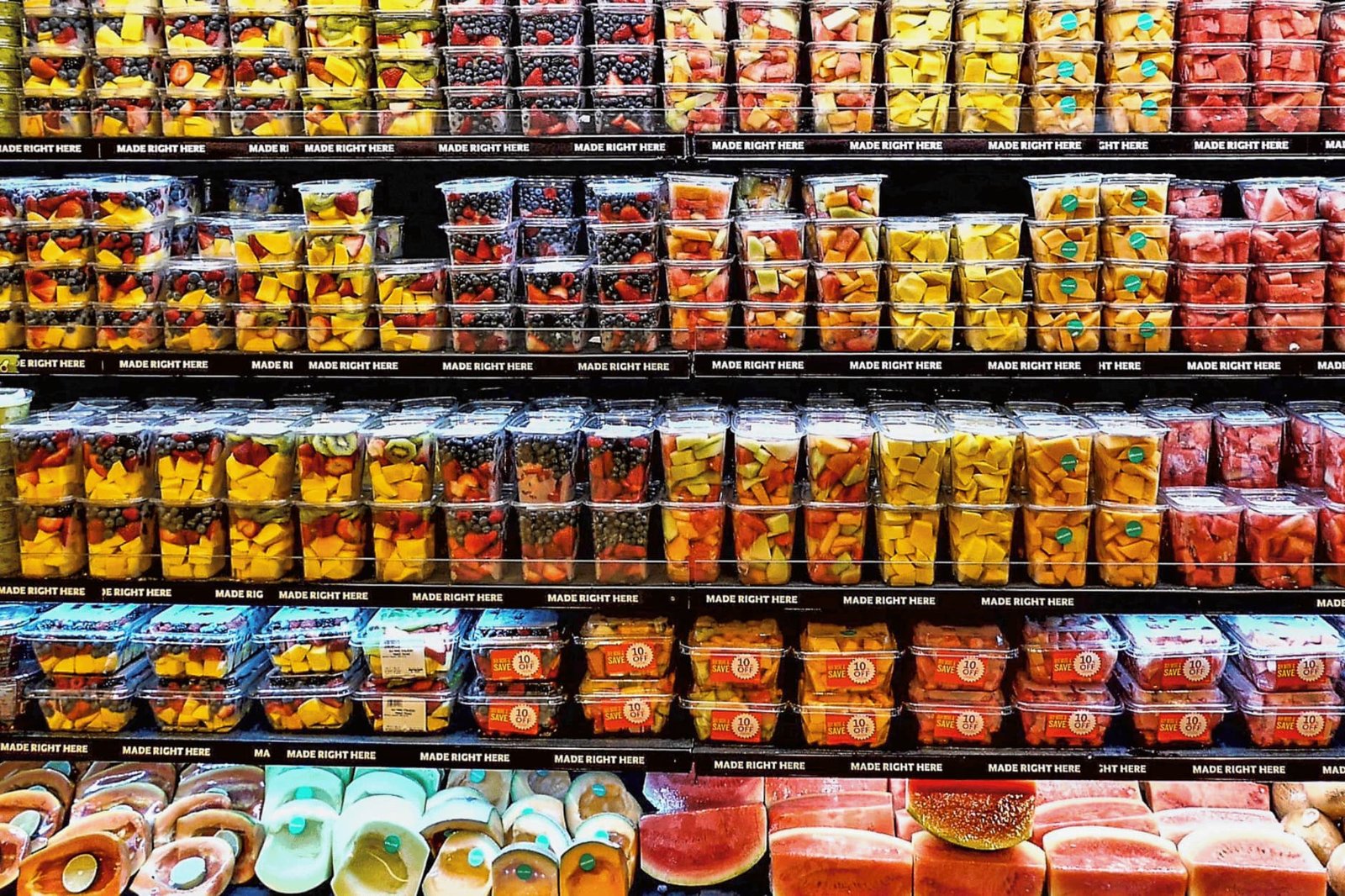Social media marketing is an important part of any restaurant’s marketing strategy. It’s a great way to connect with customers and get your brand out there in front of them, so you can build trust and loyalty with them over time.
Social media is also a good place for restaurants to promote special offers or new menu items that they want people to try. If someone sees something on social media that sounds interesting, they might be more likely than usual to come into the restaurant and try it out!
- Identify Your Target Audience
- Choose the Right Social Media Platforms
- Create a Consistent Brand Identity
- Develop Engaging Visual Content
- Leverage Influencer Marketing
- Utilize Relevant Hashtags
- Share Exclusive Promotions and Offers
- Encourage Customer Reviews and Testimonials
- Optimize Your Local Search Presence
- Monitor and Manage Your Online Reputation
- Track Analytics and Adjust Your Strategy Accordingly
- Final Words
Identify Your Target Audience
When it comes to restaurant social media marketing, identifying your target audience is a critical step in crafting a successful strategy. Knowing who you are trying to reach will help you create content that resonates with them and meets their needs, ultimately leading to increased customer engagement and sales. In this section, we’ll discuss how to identify your target audience and ways to cater to them effectively on social media.
Define Your Ideal Customer
To begin, think about your ideal customer. Who do you want to attract to your restaurant? Consider factors such as age, gender, income level, location, interests, and lifestyle. For example, if your restaurant specializes in organic, farm-to-table cuisine, your target audience might be health-conscious individuals, passionate about sustainability and locally sourced ingredients.
Analyze Your Current Customer Base
Another way to identify your target audience is to analyze your existing customer base. Look for patterns and trends in demographics, preferences, and behaviors. This will give you valuable insights into who is already drawn to your restaurant and why. You can then use this information to create content and promotions that appeal to similar individuals on social media.
Research Your Competitors
Take a look at your competition and see who they’re targeting. While you don’t want to copy their strategies, it can be helpful to know who they’re attracting and why. Are there any gaps in the market that your restaurant can fill? Identifying these opportunities will help you reach potential customers who may be underserved by your competitors.
Craft Your Brand Persona
With your target audience defined, it’s time to create a brand persona that speaks directly to them. This persona should embody the values, interests, and preferences of your target audience, helping to make your restaurant more relatable and appealing. Use this persona as a guide when creating content for social media, ensuring that your messaging is consistent and on-brand.
Engage and Learn from Your Audience
Finally, don’t forget to engage with your audience on social media. Ask questions, respond to comments, and solicit feedback. This not only helps to build trust and rapport with your customers but also provides valuable insights into their preferences and needs. Use this information to adjust your social media strategy and create content that will resonate even more with your target audience.
| Customer Examples | Detailed Description |
|---|---|
| Business Luncher | A professional who values efficient service, quiet ambiance, and a menu with quick yet satisfying dishes. |
| Date Night Couple | A romantic pair who may prefer a cozy and intimate setting, a menu with shareable plates or desserts, and a wine list with a variety of options. |
| Family with Children | A group with young children who value a welcoming atmosphere, a menu with kid-friendly options, and a staff that is patient and accommodating. |
| Weekend Bruncher | Someone who enjoys a leisurely weekend brunch with friends or family, and may seek out a menu with egg dishes, mimosas, and a relaxed ambiance. |
| Happy Hour Group | A group of coworkers or friends who value happy hour specials, a lively atmosphere, and a menu with appetizers and cocktails. |
| Healthy Eater | A customer who prioritizes healthy eating, and may prefer a menu with fresh, organic, or low-calorie options. |
| Tourist | A visitor to the area who may be interested in local cuisine, cultural experiences, and popular tourist spots. |
| Wine Connoisseur | Someone who appreciates a restaurant with an extensive wine list, knowledgeable staff, and a menu with wine-pairing options. |
| Vegetarian / Vegan | A customer who prefers a menu with plant-based options or dishes that cater to dietary restrictions. |
| Budget-Conscious Customer | A customer who values affordability and may seek out happy hour specials, discounts, or promotions. |
| Celebrity Spotter | A customer who seeks out trendy, upscale restaurants with a reputation for attracting celebrities or high-profile guests. |
| Event Planner | Someone who is organizing an event or gathering and may require catering services, private dining options, or a unique venue. |
| Senior Citizen | An individual who may prefer quieter dining options, smaller portion sizes, and senior discounts. |
| Foodie Adventurer | A culinary enthusiast who enjoys trying new dishes and exploring different flavors. They may seek out unique or exotic cuisine. |
| Sports Fan | A customer who enjoys watching sports games while dining out, and may seek out a restaurant with TVs, bar seating, and a menu with game-day specials. |
| Solo Diner | Someone who is dining alone and may prefer a restaurant with a bar, a menu with single-serving options, and a welcoming atmosphere. |
| Late Night Craver | A customer who seeks out restaurants that are open late, and may prefer a menu with late-night specials or comfort food options. |
| Breakfast on-the-go | Someone who values a quick and easy breakfast option, and may seek out a restaurant with a drive-thru, takeout, or grab-and-go options. |
| Local Supporter | A loyal customer who frequently visits the restaurant and may appreciate personalized service, recognition, and special offers. |
| Anniversary Celebrator | A couple celebrating a special occasion, such as an anniversary, who may seek out a romantic setting, a menu with indulgent and indulging dishes, and a staff that can help make the occasion memorable. |
In summary, identifying your target audience is an essential step in restaurant social media marketing. By understanding who you want to attract, analyzing your current customers, researching competitors, crafting a brand persona, and engaging with your audience, you’ll be well on your way to creating a successful social media strategy that gains customers and increases sales.
Choose the Right Social Media Platforms
Selecting the right social media platforms for your restaurant is crucial in reaching your target audience and maximizing your marketing efforts. With so many platforms available, each with its unique features and user demographics, it can be challenging to determine which ones are the best fit for your restaurant. In this section, we will discuss the advantages of different platforms and provide guidance on how to choose the most suitable ones for your restaurant’s marketing strategy.
As one of the most widely used social media platforms, Facebook is a great choice for most restaurants. With its diverse user base, it allows you to reach a broad audience, including your target customers. It also offers various advertising options, making it easier to promote your restaurant and reach new potential customers. Additionally, Facebook’s review system and location-based features can help boost your online presence and drive foot traffic to your establishment.
Instagram is a highly visual platform, making it an excellent choice for showcasing your restaurant’s food, ambiance, and overall experience. With its focus on images and videos, it’s perfect for sharing mouthwatering photos and engaging content that entices users to visit your restaurant. Instagram’s Stories feature provides a unique opportunity to share behind-the-scenes content, special promotions, or events, helping you connect with your audience on a more personal level.
Twitter is a fast-paced platform ideal for sharing real-time updates, engaging in conversations, and quickly addressing customer feedback. It can be an excellent choice for restaurants looking to share news, and promotions, or interact with customers through regular tweets and the use of hashtags. However, it might not be the best platform for showcasing visual content like Instagram, as it is more text-focused.
Pinterest is a visually driven platform that allows users to discover, save, and share inspiring content. This platform is perfect for sharing high-quality images of your dishes, recipes, or even interior design ideas. It can be especially effective for restaurants with a unique aesthetic, as it enables you to showcase your creativity and attract customers interested in a specific niche or theme.
How to Choose the Right Platforms
When deciding which platforms to use for your restaurant’s social media marketing, consider the following factors:
- Your target audience: Determine which platforms your target audience is most active on and focus your efforts there. For example, if your ideal customer is a young professional, Instagram might be a better choice than Facebook.
- Your content: Consider the type of content you want to create and share. If you’re focusing on visual content, Instagram and Pinterest would be excellent choices. If you’re more interested in engaging with customers in real-time or sharing updates, Twitter might be more suitable.
- Your resources: Be realistic about the time and effort you can dedicate to managing your social media accounts. It’s better to be active and consistent on one or two platforms than to spread yourself too thin across multiple channels.
By carefully considering these factors and understanding the advantages of each platform, you can choose the right social media channels to effectively market your restaurant, gain customers, and increase sales.
Create a Consistent Brand Identity
Establishing a strong and consistent brand identity is crucial for any restaurant looking to make an impact on social media. A well-defined brand identity not only helps you stand out from the competition but also creates a sense of familiarity and trust among your target audience. In this section, we will discuss the importance of a consistent brand identity and share tips on how to achieve it across your social media platforms.
Why Consistency Matters
Consistency in your brand identity helps to:
- Establish a strong image: When your visuals, messaging, and tone are consistent across all social media platforms, it reinforces your restaurant’s image, making it more memorable and recognizable to potential customers.
- Build trust: Consistency creates a sense of familiarity and reliability, which can help to build trust among your target audience. When customers know what to expect from your restaurant, they are more likely to develop loyalty and continue to engage with your brand.
- Streamline your marketing efforts: A consistent brand identity makes it easier for you to create content and marketing materials since you have a clear framework to follow.
Tips for Creating a Consistent Brand Identity
- Define your brand personality: Start by outlining the personality traits and characteristics that define your restaurant. Are you upscale and sophisticated, or casual and friendly? This will help you determine the tone and style of your social media content.
- Develop a visual style guide: Create a visual style guide that includes your restaurant’s logo, color palette, typography, and any other design elements. This will ensure that your visual content is consistent across all platforms and reinforces your brand identity.
- Craft a consistent voice and tone: Your brand’s voice and tone should reflect your restaurant’s personality and resonate with your target audience. Be consistent in the way you communicate on social media, whether it’s through captions, responses to comments, or direct messages.
- Use consistent messaging: Make sure that the key messages you want to convey are consistent across all social media platforms. This includes your restaurant’s unique selling points, promotions, or upcoming events.
- Monitor and adjust: Regularly review your social media content to ensure that it remains consistent with your brand identity. If you notice any inconsistencies, make the necessary adjustments to get back on track.
Creating a consistent brand identity is essential for effective restaurant social media marketing. By defining your brand personality, developing a visual style guide, crafting a consistent voice and tone, using consistent messaging, and monitoring your content for consistency, you can strengthen your restaurant’s image and foster trust among your target audience. This will ultimately help you gain customers and increase sales.
Develop Engaging Visual Content
Visual content plays a crucial role in capturing the attention of your target audience and inspiring them to engage with your restaurant on social media. Stunning images and videos not only showcase your restaurant’s unique offerings but also create an emotional connection with your customers. In this section, we will discuss the importance of engaging visual content and share tips on how to create it for your restaurant’s social media marketing strategy.
Why Visual Content Matters
Engaging visual content:
- Grabs attention: In the crowded world of social media, eye-catching visuals can make your content stand out and draw users in, increasing the likelihood of engagement.
- Evokes emotions: Beautiful imagery and videos can elicit a range of emotions, from hunger to excitement, motivating users to take action, such as sharing your content or visiting your restaurant.
- Tells a story: Visual content allows you to tell a story about your restaurant, from the ingredients and preparation to the atmosphere and customer experience, helping customers form a deeper connection with your brand.
Tips for Creating Engaging Visual Content
- Invest in high-quality visuals: High-quality images and videos are essential for capturing the attention of your audience. Invest in a good camera or smartphone, and learn basic photography and editing techniques to create stunning visuals that showcase your restaurant’s offerings.
- Showcase your dishes: Capture mouthwatering images of your dishes and share them on your social media platforms. Be creative with angles, lighting, and composition to make your food look as appetizing as possible.
- Highlight your restaurant’s atmosphere: Share images and videos that showcase your restaurant’s ambiance, décor, and unique features. This helps users envision themselves at your establishment and entices them to visit.
- Share behind-the-scenes content: Give your audience a glimpse into the inner workings of your restaurant by sharing behind-the-scenes content, such as food preparation, staff interactions, or special events. This not only humanizes your brand but also allows customers to feel more connected to your business.
- Leverage user-generated content: Encourage your customers to share their own images and experiences at your restaurant. Share the best user-generated content on your social media platforms, giving credit to the original poster. This not only provides you with a source of engaging visuals but also fosters a sense of community and loyalty among your customers.
| Content Tips | What do I mean? |
|---|---|
| Show off your dishes | Use high-quality photos and videos to showcase your most visually appealing and delicious menu items. |
| Use natural lighting | Whenever possible, use natural light to capture your dishes in the best possible way. |
| Incorporate branding | Make sure your visual content includes branding elements such as logo, colors, or typography to reinforce brand recognition. |
| Share behind-the-scenes content | Give your audience a glimpse into the kitchen, the chef’s creative process, or the restaurant’s unique atmosphere. |
| Use user-generated content | Share photos or videos taken by customers on social media, and give them credit for the content. |
| Highlight seasonal or holiday specials | Create visual content that showcases your seasonal or holiday menu items and promotions. |
| Use food styling techniques | Use food styling techniques such as garnishes, plating, or props to make your dishes more visually appealing. |
| Use video content | Create short videos that show the cooking process, behind-the-scenes footage, or customer testimonials. |
| Feature local ingredients | Highlight the use of locally sourced ingredients or partnerships with local farms or suppliers. |
| Use humor or personality | Inject humor or personality into your visual content to make it more engaging and memorable. |
| Collaborate with influencers | Partner with social media influencers or food bloggers to create visual content that showcases your restaurant and menu items. |
| Show off your restaurant’s ambiance | Use visual content to showcase the restaurant’s unique design, decor, or atmosphere. |
| Use mouth-watering descriptions | Use descriptive language to make the dishes sound even more delicious and tempting. |
| Use Instagram filters | Experiment with Instagram filters to create a consistent and visually appealing aesthetic for your profile. |
| Use Instagram Stories | Use the Instagram Stories feature to share short-lived, behind-the-scenes or in-the-moment content. |
| Create how-to or recipe videos | Create videos that show how to make one of your signature dishes, or share a recipe that uses one of your menu items. |
| Use graphics or illustrations | Use graphics or illustrations to create visually appealing content that highlights menu items or promotions. |
| Share customer reviews | Use visual content to feature positive customer reviews or testimonials. |
| Use social media templates | Use pre-designed social media templates to create visually consistent and professional-looking content. |
| Experiment with angles and perspectives | Take photos or videos from different angles or perspectives to create more dynamic and interesting visual content. |
In conclusion, developing engaging visual content is essential for a successful restaurant’s social media marketing strategy. By investing in high-quality visuals, showcasing your dishes and atmosphere, sharing behind-the-scenes content, and leveraging user-generated content, you can create a captivating online presence that attracts customers and boosts sales.
Leverage Influencer Marketing
Influencer marketing has become an increasingly popular and effective strategy for restaurants looking to expand their reach and credibility on social media. By partnering with influencers who have a loyal and engaged following, you can tap into their audience and generate buzz around your restaurant. In this section, we will discuss the benefits of influencer marketing and provide tips on how to leverage it for your restaurant’s social media marketing strategy.
Why Influencer Marketing Matters
Influencer marketing can:
- Increase brand awareness: Collaborating with influencers can introduce your restaurant to a new audience, helping to increase your visibility and reach on social media.
- Boost credibility: When influencers share their positive experiences at your restaurant, it acts as a form of social proof, enhancing your credibility and trustworthiness in the eyes of potential customers.
- Drive engagement: Influencer-generated content often receives high levels of engagement, allowing you to reach a larger audience and increase the chances of your content being shared.
Tips for Leveraging Influencer Marketing
- Identify the right influencers: Look for influencers whose audience aligns with your target demographic and who share content related to food, restaurants, or lifestyle. Their content should also reflect your brand’s values and aesthetics.
- Establish clear goals: Before reaching out to an influencer, determine your objectives for the collaboration, such as increasing brand awareness, driving foot traffic, or promoting a specific menu item.
- Develop a mutually beneficial partnership: Collaborate with the influencer to create content that benefits both parties. Offer them a unique experience, exclusive access, or free meals in exchange for their promotion of your restaurant.
- Track results: Monitor the performance of influencer-generated content and measure its impact on your restaurant’s social media marketing goals. This will help you determine the success of the collaboration and inform future influencer marketing efforts.
- Maintain relationships: After a successful collaboration, maintain a relationship with the influencer to potentially work together again in the future. Cultivating long-term partnerships can lead to more impactful and authentic endorsements.
Summing up, leveraging influencer marketing can be a highly effective way to boost your restaurant’s social media marketing efforts. By identifying the right influencers, establishing clear goals, developing mutually beneficial partnerships, tracking results, and maintaining relationships, you can increase brand awareness, credibility, and engagement, ultimately attracting more customers and increasing sales.
Utilize Relevant Hashtags
Hashtags are an essential tool for increasing the visibility and reach of your restaurant’s social media content. By using relevant and popular hashtags, you can make it easier for users to find and engage with your posts. In this section, we will discuss the importance of utilizing hashtags and provide tips on how to effectively use them in your restaurant’s social media marketing strategy.
Why Hashtags Matter
Using hashtags in your social media content can:
- Increase visibility: Hashtags help categorize your content and make it more discoverable for users searching for related topics, ultimately increasing the visibility of your posts.
- Expand reach: By using popular and relevant hashtags, you can tap into a larger audience interested in your content, driving more engagement and potential customers to your restaurant.
- Connect with your target audience: Hashtags can help you find and engage with users who are specifically interested in your restaurant’s niche or offerings, fostering a sense of community and brand loyalty.
Tips for Utilizing Hashtags
- Research popular and relevant hashtags: Identify hashtags that are popular within your restaurant’s niche or location, as well as those related to your specific offerings or promotions. Use tools like Hashtagify, RiteTag, or Instagram’s search function to find trending and relevant hashtags.
- Create branded hashtags: Develop unique hashtags that represent your restaurant’s brand or specific campaigns. Encourage your customers to use these branded hashtags when they share content related to your restaurant, helping to increase brand awareness and generate user-generated content.
- Use a mix of hashtags: Combine popular, niche, and branded hashtags in your posts to maximize visibility and reach. But avoid using too many hashtags in a single post, as this can make your content appear spammy or desperate.
- Monitor hashtag performance: Track the performance of your hashtags to determine which ones drive the most engagement and conversions. Use this data to refine your hashtag strategy and focus on the most effective hashtags.
- Engage with hashtag users: Actively engage with users who use your branded or relevant hashtags, by liking, commenting, or sharing their posts. This not only helps to build relationships with your audience but also encourages them to continue using your hashtags and sharing content related to your restaurant.
#foodie #foodporn #foodgasm #yum #delicious #instafood #foodstagram #nomnom #foodlover #foodphotography #foodblogger #restaurant #foodcoma #foodislife #foodgram #yumyum #eats #cheflife #foodbeast #hungryUtilizing relevant hashtags is a powerful way to boost your restaurant’s social media marketing efforts. By researching popular and relevant hashtags, creating branded hashtags, using a mix of hashtags, monitoring hashtag performance, and engaging with hashtag users, you can increase the visibility and reach of your content, ultimately attracting more customers and driving sales.
Share Exclusive Promotions and Offers
Offering exclusive promotions and special offers is an effective way to incentivize your audience to follow your restaurant’s social media accounts and engage with your content. By sharing these promotions on your social media channels, you can drive traffic to your restaurant, increase sales, and foster customer loyalty. In this section, we will discuss the benefits of sharing exclusive promotions and offers on social media and provide tips on how to effectively promote them.
Benefits of Sharing Exclusive Promotions and Offers
- Attract new customers: Exclusive offers can pique the interest of potential customers who might be enticed to visit your restaurant and try your offerings.
- Reward loyal customers: Special promotions and offers can serve as a way to thank your loyal customers for their continued support, fostering a strong sense of brand loyalty.
- Increase social media engagement: Exclusive offers shared on social media can encourage users to like, comment, and share your posts, contributing to increased visibility and engagement.
- Drive sales: Promotions and offers can help drive sales by enticing customers to take advantage of limited-time deals or menu items.
Tips for Promoting Exclusive Offers on Social Media
- Create visually appealing graphics: Design eye-catching images or videos that highlight the promotion or offer, making it easy for users to understand the deal and feel enticed to participate.
- Use clear and concise copy: Ensure your promotional copy clearly communicates the offer’s details, including any terms and conditions, and creates a sense of urgency to encourage users to act quickly.
- Target your audience: Use social media advertising tools to target your promotions and offers to specific segments of your audience based on factors such as location, interests, and demographics.
- Collaborate with influencers: Partner with local food bloggers or influencers to promote your exclusive offers, leveraging their audience to increase the reach and credibility of your promotions.
- Track and analyze results: Monitor the performance of your promotions and offers, analyzing data such as engagement, redemption rates, and sales to determine which strategies are most effective and adjust your approach accordingly.
In conclusion, sharing exclusive promotions and offers on your restaurant’s social media channels is an excellent way to attract new customers, reward loyal ones, and boost sales. By creating visually appealing graphics, using clear and concise copy, targeting your audience, collaborating with influencers, and tracking results, you can effectively promote your restaurant’s deals and drive customer engagement.
Encourage Customer Reviews and Testimonials
Positive customer reviews and testimonials are essential for building trust and credibility among potential customers. They not only showcase your restaurant’s strengths but also offer social proof that can influence potential customers’ decisions to dine at your establishment. In this section, we will discuss the importance of customer reviews and testimonials, as well as share tips on how to encourage and leverage them on social media.
Importance of Customer Reviews and Testimonials
- Build trust and credibility: Positive reviews and testimonials signal to potential customers that your restaurant offers great food and service, making them more likely to choose your establishment over competitors.
- Improve search engine rankings: Many search engines, such as Google, consider customer reviews and ratings when determining search rankings, meaning that having more positive reviews can help improve your restaurant’s online visibility.
- Identify areas for improvement: Reviews and testimonials can provide valuable feedback on areas where your restaurant can improve, helping you address any issues and maintain a high level of customer satisfaction.
Tips for Encouraging and Leveraging Customer Reviews and Testimonials on Social Media
- Ask for reviews: Politely request customers to leave a review or testimonial after their dining experience, either in person or through follow-up emails and messages.
- Respond to reviews: Engage with customers by thanking them for their positive reviews or addressing any concerns raised in negative reviews, demonstrating your commitment to customer satisfaction.
- Share positive reviews: Highlight and share glowing customer reviews and testimonials on your social media platforms, showcasing your restaurant’s strengths and enticing potential customers.
- Create a hashtag for your reviews: Encourage customers to use a specific hashtag when sharing their reviews or testimonials on social media, making it easy to track and share their feedback.
- Offer incentives: Provide incentives for customers to leave a review, such as a discount on their next visit or a chance to win a gift card, encouraging more people to share their experiences.
In conclusion, encouraging customer reviews and testimonials on social media is crucial for building trust and credibility, improving search engine rankings, and identifying areas for improvement. By actively requesting reviews, engaging with customers, sharing positive feedback, creating a review-specific hashtag, and offering incentives, you can effectively leverage customer reviews to enhance your restaurant’s online presence and reputation.
Optimize Your Local Search Presence
A strong local search presence is crucial for restaurants looking to attract customers from their surrounding area. Ensuring that your restaurant appears in local search results not only increases visibility but also makes it easier for potential customers to find and visit your establishment. In this section, we will discuss the importance of optimizing your local search presence and provide tips on how to improve your restaurant’s visibility in search engines.
Importance of Local Search Presence
- Increase visibility: Optimizing your local search presence makes it easier for potential customers to find your restaurant when searching for dining options in their area.
- Attract local customers: A strong local search presence helps target customers who are most likely to visit your restaurant, leading to higher foot traffic and sales.
- Stay ahead of competitors: By optimizing your local search presence, your restaurant can stand out among competitors and increase the chances of being chosen by potential customers.
Tips for Optimizing Your Local Search Presence
- Claim and optimize your Google My Business listing: Ensure your restaurant’s information is accurate and up-to-date by claiming and optimizing your Google My Business listing. Include essential details such as your address, phone number, hours of operation, and website.
- Use relevant keywords: Incorporate location-specific keywords in your website’s content, meta tags, and image alt tags to improve your chances of appearing in local search results.
- Encourage customer reviews: As mentioned earlier, positive customer reviews can improve your search engine rankings. Encourage customers to leave reviews on your Google My Business listing and other review platforms.
- Add high-quality photos: Include high-quality, appealing images of your restaurant, food, and ambiance on your Google My Business listing and other local search directories to attract potential customers.
- Optimize your website for mobile: Ensure your website is mobile-friendly, as many people use their smartphones to search for local dining options. A responsive and easy-to-navigate website can improve user experience and boost your search rankings.
- Build local backlinks: Reach out to local bloggers, news outlets, and business associations to acquire backlinks, which can improve your website’s domain authority and search rankings.
In conclusion, optimizing your local search presence is essential for attracting local customers, increasing visibility, and staying ahead of competitors. By claiming your Google My Business listing, using relevant keywords, encouraging customer reviews, adding high-quality photos, optimizing your website for mobile, and building local backlinks, you can effectively improve your restaurant’s visibility in local search results and drive more customers to your establishment.
Monitor and Manage Your Online Reputation
A restaurant’s online reputation can significantly impact its success, as potential customers often research and read reviews before deciding where to dine. By monitoring and managing your online reputation, you can proactively address customer concerns, improve your restaurant’s image, and ultimately attract more patrons. In this section, we will discuss the importance of monitoring and managing your online reputation and provide some tips on how to do so effectively.
Importance of Monitoring and Managing Your Online Reputation
- Understand customer sentiment: Monitoring online reviews and social media mentions can help you gauge customer satisfaction and identify areas for improvement.
- Improve customer service: Responding to negative reviews and addressing customer complaints can demonstrate your commitment to providing excellent customer service, which can build trust and loyalty.
- Attract new customers: A positive online reputation can influence potential customers’ decisions to visit your restaurant, leading to increased patronage and revenue.
Tips for Monitoring and Managing Your Online Reputation
- Monitor review sites: Regularly check popular review platforms such as Google, Yelp, and TripAdvisor to stay informed about customer feedback. Set up alerts to receive notifications when new reviews are posted.
- Respond to reviews: Acknowledge and address both positive and negative reviews in a timely and professional manner. Thank customers for their feedback and address any concerns or complaints they may have. Be genuine and transparent in your responses, and avoid being defensive or argumentative.
- Utilize social media: Monitor your restaurant’s social media accounts for customer feedback and engage with your audience. Respond to comments and messages promptly, and address any concerns raised by customers.
- Encourage positive reviews: Ask satisfied customers to leave reviews on popular platforms, as a higher number of positive reviews can help improve your restaurant’s online reputation.
- Learn from feedback: Use customer feedback to identify areas for improvement and implement necessary changes in your restaurant’s operations. This can help enhance the overall customer experience and boost your online reputation.
- Track your progress: Regularly evaluate your restaurant’s online reputation by assessing review scores, customer feedback, and social media engagement. This can help you understand the effectiveness of your reputation management efforts and make any necessary adjustments.
In conclusion, monitoring and managing your online reputation is essential for understanding customer sentiment, improving customer service, and attracting new patrons. By keeping an eye on review sites, responding to reviews, utilizing social media, encouraging positive feedback, learning from customer insights, and tracking your progress, you can effectively manage your restaurant’s online reputation and ultimately grow your business.
Track Analytics and Adjust Your Strategy Accordingly
Continuously tracking your restaurant’s analytics and adjusting your strategies based on the gathered data is crucial for long-term success. In this section, we will discuss the importance of tracking analytics and offer some tips on how to adjust your strategy accordingly.
Importance of Tracking Analytics
- Identify trends: By tracking your restaurant’s analytics, you can identify patterns and trends in customer behavior, preferences, and overall performance. This information can help you make informed decisions and adjust your marketing and operational strategies accordingly.
- Optimize marketing efforts: Analytics can help you understand which marketing channels and campaigns are most effective, allowing you to allocate resources and efforts to maximize ROI.
- Improve customer experience: By analyzing customer feedback, reviews, and other relevant data, you can identify areas for improvement in your restaurant’s offerings and overall customer experience.
Tips for Tracking Analytics and Adjusting Your Strategy
- Use analytics tools: Utilize various analytics tools, such as Google Analytics, social media insights, and point-of-sale (POS) system reports to gather data on your restaurant’s performance, customers’ preferences, and online engagement.
- Set measurable goals: Establish clear and measurable objectives for your restaurant, such as increasing average check size, boosting customer retention, or improving online reviews. Tracking progress toward these goals can help you evaluate the effectiveness of your strategies and make necessary adjustments.
- Analyze customer data: Use customer data, including demographics, preferences, and behavior patterns, to identify your target audience and tailor your marketing and operational strategies accordingly.
- Evaluate marketing campaigns: Regularly assess the performance of your marketing campaigns by tracking key metrics such as click-through rates, conversions, and ROI. Use this information to optimize your campaigns and improve their overall effectiveness.
- Monitor and respond to customer feedback: Keep a close eye on customer reviews and feedback to identify areas for improvement in your restaurant’s offerings and customer experience. Respond to feedback promptly and professionally, and implement necessary changes based on the insights gathered.
- Adjust strategies as needed: Continuously evaluate your restaurant’s performance and adjust your strategies as needed to achieve your goals. This may involve refining your menu, enhancing your customer service, or reallocating marketing resources to more effective channels.
In summary, tracking analytics and adjusting your strategy accordingly is essential for understanding your restaurant’s performance, optimizing marketing efforts, and improving customer experience. By using analytics tools, setting measurable goals, analyzing customer data, evaluating marketing campaigns, monitoring customer feedback, and making necessary adjustments, you can ensure that your restaurant stays ahead of the competition and continues to grow.
Final Words
In conclusion, restaurant social media marketing is an indispensable tool for gaining customers and increasing sales in today’s digital age. By adopting these tips and strategies, you can effectively harness the power of social media platforms to boost your restaurant’s visibility, engage with your audience, and ultimately drive business growth.
Remember to create engaging content, utilize visual storytelling, and collaborate with influencers to capture the attention of potential customers. Additionally, don’t forget to monitor and manage your online reputation, track analytics, and adjust your strategies to ensure your restaurant stays ahead of the competition.
As a restaurateur, it’s essential to keep up with the latest trends and technologies in social media marketing. Stay informed and continuously refine your marketing tactics to create a memorable and enticing online presence that resonates with your target audience. By doing so, you’ll be well on your way to turning your restaurant into a thriving and profitable establishment.
So, grab the opportunity to showcase your restaurant’s unique offerings, share your passion for food and hospitality, and connect with your customers on a personal level through social media marketing. With dedication, creativity, and a data-driven approach, your restaurant is bound to shine in the competitive food industry landscape.

























